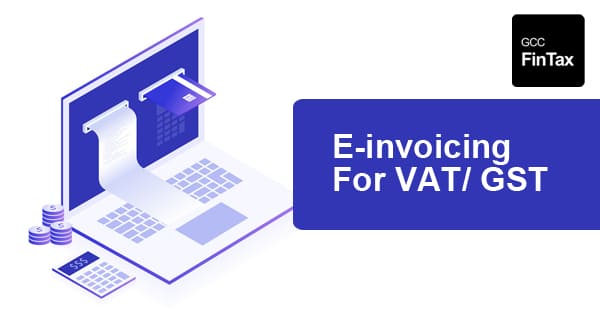
Electronic invoicing (“e-invoicing”) refers to adoption of standard that requires every business to issue invoice according to a prescribed electronic format that contains mandatory information which usually contains digitalized signatures for the authenticity as well as integrity purposes and can be transmitted to tax administration by specified electronic system in real time[1]. The Governments are looking for new ways of enforcing tax laws and for collecting more Value Added Tax by following the use of electronic Invoicing[2].
Canada must consider Electronic Invoicing for the goods and services tax or the harmonized sales tax. The electronic invoicing standardization can help in reducing the dispute with CRA related to requirements of documentary which are required for claiming the input tax credits (ITCs) for the tax that is given on purchases. The verification of goods and services tax or the harmonized sales taxnumbers as well as the names of business can be done in real time. Invoices validation from tax administration can be received by registrant before claiming the ITCs1.Electronic invoicing directs fundamental weakness in system: the suppliers are required to incorporate specified information on the invoices in order to enable that the registrant purchases can claim Input Tax Credits and there is a burden on the purchasers for verification of information on every invoice. As a result of this if there is any sort of non-compliance by the suppliers it can result in huge problems for the purchasers and it could result in unfairness towards a purchaser who gives good and services tax in good faith1.
Kingdom of Saudi Arabia is focusing on several initiatives for digitalization of economy. The GAZT intended to introduce e-invoicing in Kingdom of Saudi Arabia with publication of draft amendment on the 17th of September 2020 related to Value Added Tax Implementing Regulations. The draft covered aspects of e-invoicing rules: All taxable individuals living in Kingdom of Saudi Arabia, the customers and the third parties who issue invoices on the behalf of any taxable individuals are required to use the electronic invoices. The Value Added Tax requirement of electronic invoices will be similar to the paper tax invoices, credit notes and the debit notes requirements[3].
On 14thAugust, 2020, webinar had been held in which clarification had been provided for good and services tax associated with electronic invoicing in India. It is considered to be mandatory for the business-to-business supplied through several good and services tax-registered persons from the 1st of October, 2020. The process of electronic invoicing is uploaded by National Informatics Centre. Following points are important for understanding electronic invoicing good and services tax[4].
The below mentioned changes will be made togood and services tax(GST) by electronic invoicing[5]:
With the arrival of Value Added Tax in United Arab Emirates, the archiving of the invoices has become more important. The Value Added Tax-registered companies need to keep the invoices for extended time period that means current year and 5 more years. This can be easily done through e-invoicing[6].Value added tax legislative package has been adopted as well as published by United Arab Emirates. Electronic invoicing is allowed however not mandatory yet. There is a requirement of digital signature for ensuring the authenticity and integrity[7].
[1] Inc. Advanced Solutions International, “Annual Conference,” Canada Should Consider E-Invoicing for GST/HST, accessed November 7, 2020, https://www.ctf.ca/ctfweb/EN/Newsletters/Canadian_Tax_Focus/2020/3/200315.aspx.
[2] “What You Should Know about E-Invoicing: What Is E-Invoicing,” What you should know about E-Invoicing | What is E-Invoicing, accessed November 7, 2020, https://www.seeburger.com/info/what-you-should-know-about-e-invoicing/.
[3] “Saudi Arabia Launches Consultation on e-Invoicing,” EY, accessed November 5, 2020, https://www.ey.com/en_gl/tax-alerts/saudi-arabia-launches-consultation-on-e-invoicing.
[4] “India: Key Features of Mandatory GST e-Invoicing as from 1 October 2020 Clarified,” Global VAT Compliance, September 1, 2020, https://www.globalvatcompliance.com/india-key-features-of-mandatory-gst-e-invoicing-as-from-1-october-2020-clarified/.
[5] Admin, “e-Invoicing under GST - Insights On Nearing The e-Invoicing Era,” Taxontips, September 9, 2020, https://www.taxontips.com/e-invoicing-under-gst-insights-on-nearing-the-e-invoicing-era/.
[6] “E-Invoicing in the UAE: What to Do to Achieve Compliance,” ArabianIndustry.com, accessed November 14, 2020, https://www.arabianindustry.com/supply-chain/news/2018/mar/20/e-invoicing-in-the-uae-how-to-achieve-compliance-5902078/.
[7] “E-Invoicing World Map,” ESKER, accessed November 14, 2020, https://cloud.esker.com/fm/einvoicing-compliance-map/.
Disclaimer: Content posted is for informational & knowledge sharing purposes only, and is not intended to be a substitute for professional advice related to tax, finance or accounting. The view/interpretation of the publisher is based on the available Law, guidelines and information. Each reader should take due professional care before you act after reading the contents of that article/post. No warranty whatsoever is made that any of the articles are accurate and is not intended to provide, and should not be relied on for tax or accounting advice.
You can access Law including Guidelines, Cabinet & FTA Decisions, Public Clarifications, Forms, Business Bulletins for all taxes (Vat, Excise, Customs, Corporate Tax, Transfer Pricing) for all GCC Countries in the Law Section of GCC FinTax